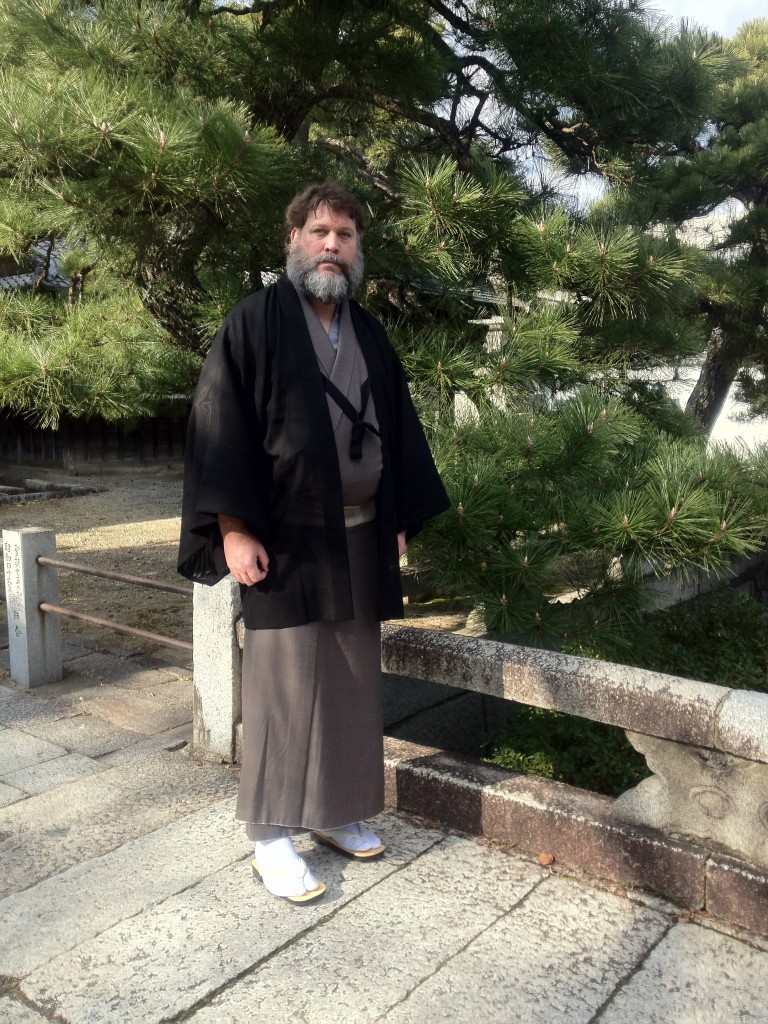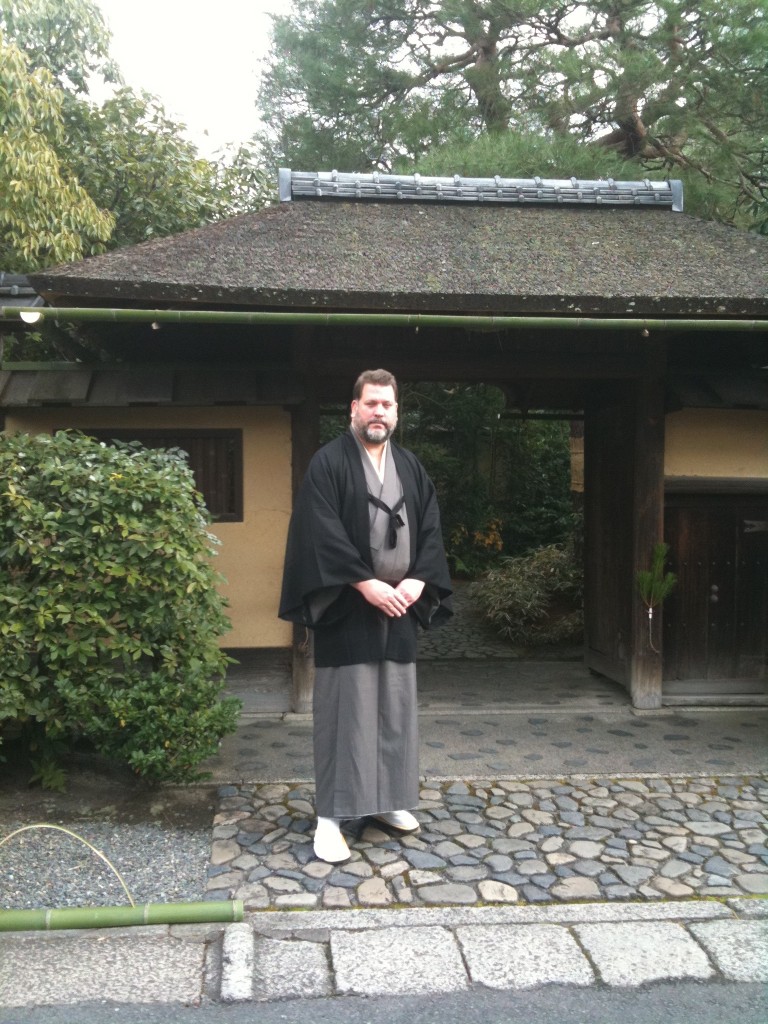WiK has a diverse membership, with writers working in genres that range from modern poetry to novels, non-fiction and educational material. Tea master Bernie MacMugen comes to books from a different angle. A true bibliophile, he not only collects rare books but has a special interest in binding and publishing. As such he brings to WiK a knowledge and expertise that complements those of us who live in the abstract world more than the practical.
************************
Why Kyoto ?
I am often asked,’Why did you come to Japan’? Or, ‘why Kyoto?’ But I really did not decide to come to Kyoto myself. It was someone else’s decision to come to Kyoto many centuries ago.
Murata Juko (1423-1502) moved to Kyoto from Nara in about 1444 after ten years of ‘unsuccessful’ priestly studies at Shomyoji. He eventually studied Zen at Daitokuji under Ikkyu. This is the beginning of the development of Cha no Yu or Chado as we know it today. From its beginnings in Murata’s thatched hut on Sanjo Street near the Duck River, Kyoto remains the heart of Tea.
I came to Kyoto nearly twenty years ago to study Murata’s style of tea. I continue my studies and also make wooden tea utensils. I also have a fondness for books and study hand bookbinding. I am also beginning to re-publish old out-of-print books which I feel need to be in print.
To explain more about my interest in Tea, here is an excerpt from an essay I wrote as part of the process to get a scholarship to study in Kyoto:
“The evolution of Chado has had many important influences on the Japanese and their culture. I feel in the future Chado will have the same type of influence on all humans that seek to study its meaning. From its beginning as a carefully considered way of preparing and drinking tea by ‘Chinese Zen’ monks, today it has become a catalyst for the pursuit of peace on Earth.
Many westerners have been drawn to Japanese arts as I have, but there has been a disproportionate amount of interest in the Martial Arts. While the Martial Arts of Japan are very spiritual, they are still arts of conflict and war. There are, however, other Zen influenced arts that are quite peaceful in nature. Foremost among these is Chado, which is truly an art of peace. With its serene communion of a small group of people, and its appreciation of nature, here lie the roots that can grow into a healthier Earth.
For hundreds of years, Chado has been a way for people to take a brief moment to appreciate each other and to exemplify Wa, Kei, Sei, Jaku. Harmony, Respect, Purity, and Tranquility. In the middle of the last century there was a great unexpected change in the evolution of Chado, when Soshitsu Sen XV of the Urasenke Tradition began to spread it throughout the rest of the Earth. He wanted to promote cultural understanding between Japan and other nations of the Earth. I think that the way people from different cultures and backgrounds have embraced Chado from all over the Earth in the last three decades shows that Chado is no longer a purely Japanese pursuit, but a human pursuit.
The evolution of this organism we call Earth is fascinating. The diversity of life and its beauty is, as far as we know, unique in the universe. Our evolution as humans is also unique in the fact that we now have the power to determine the fate of the Earth by the way we conduct ourselves. We as humans must put our egos aside and realize that we are all one Earth organism. We have been in conflict with ourselves for all our history. I feel that before we can truly realize our full potential in the universe we must heal ourselves and the Earth. We must work to find ways to bring all humans together into one peaceful culture. This has been somewhat attempted on a large scale with organizations like the United Nations. However, I believe this must be accomplished through intimate cultural exchange and understanding.
I feel that the way the Urasenke tradition of Chado has worked to introduce Japanese culture throughout the Earth is the beginning of something much bigger and important to all human cultures. With the same influence that all the great Chajin in history have had on the evolution of Japanese culture, I feel that the Chajin of the future will have a direct influence on the evolution of humanity.”
MacMugen Somu, is an associate professor (Jun-Kyoju) of the Urasenke tradition of Cha no Yu and a member of the Ichiukai study group.







Recent Comments